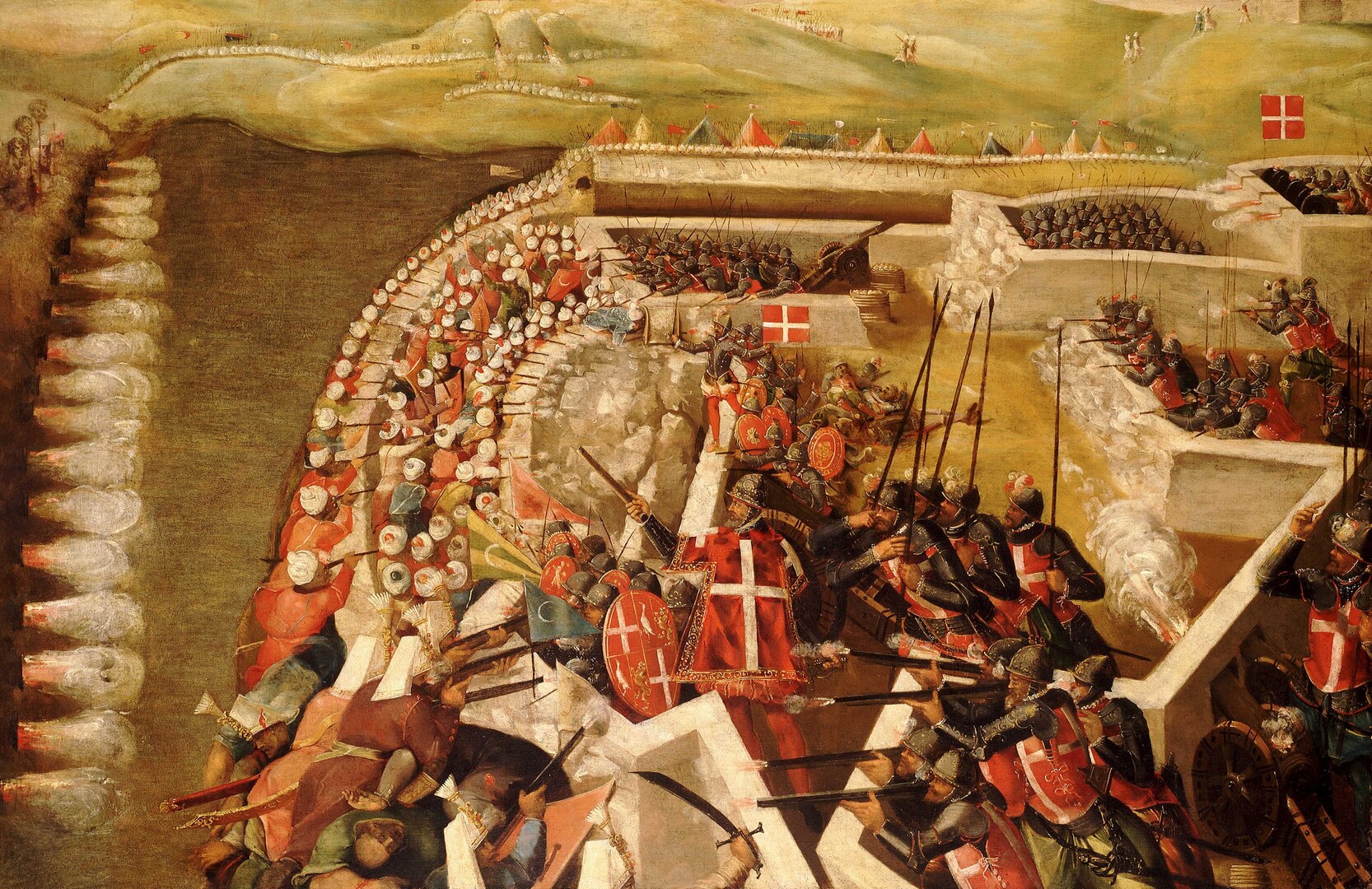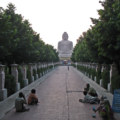Beneath the relentless Mediterranean sun, where sea and stone have witnessed centuries of struggle and triumph, the Maltese archipelago stood defiant in 1565. It was not merely a battlefield; it was a crucible of faith, a test of endurance where swords clashed as prayers rose to the heavens. For four harrowing months, these islands became the stage for one of history’s most dramatic sieges—a moment when the fate of Christendom in the Mediterranean and Europe hung by a thread.
The Great Siege of Malta was more than a military confrontation; it was a pilgrimage of faith and hope, a collective journey in which courage and devotion became the weapons of the righteous. The Knights of the Order of Saint John, alongside the Maltese people, faced the full force of the mightiest power of the time, the Ottoman Empire, not only with steel and gunpowder but with unwavering belief in divine protection. Their survival, against impossible odds, turned the archipelago into a bastion of Christianity and a guardian of the pilgrim’s path.
The Siege that shaped the course of Europe
In the 16th century, the Ottoman Empire, under Sultan Suleiman the Magnificent, sought complete dominance over the Mediterranean. After seizing Rhodes in 1522, the Ottomans fixed their gaze on the Maltese archipelago—territory that stood at the heart of the Christian maritime world.
To the Empire’s strategists, Malta was more than a military prize; it was the gateway to Rome, the outpost from which Ottoman forces could sever the Christian pilgrimage routes that stretched across the sea. For centuries, these islands had been a sanctuary for travelers bound for the Holy Land, Rome, and Santiago de Compostela. The Order of Saint John not only defended these pilgrims but ensured their safe passage through the treacherous waters of an uncertain world. If Malta fell, the spiritual highways of Christendom would be severed, and the crescent might eclipse the cross in the Mediterranean forever.

On May 18, 1565, an Ottoman armada of 30,000 to 40,000 soldiers landed upon Malta’s shores. Opposing them stood a force of barely 8,000 defenders: the Knights of Saint John, Spanish troops, Maltese militia, and civilians who took up arms, knowing that surrender meant annihilation. The siege began with an unrelenting assault on the fortifications of Birgu, Senglea, and Fort St. Elmo. Cannons roared, walls crumbled, and yet, through fire and blood, Malta endured, Christianity endured.
At the heart of this resistance stood Jean Parisot de la Valette, the Grand Master of the Order, who wielded not only the sword but the shield of faith. The defenders gathered daily in churches, their prayers interwoven with the clash of steel. When hope wavered, they turned to the Virgin Mary, entrusting their fate to her intercession. De la Valette himself prayed regularly to the Blessed Virgin, particularly before the ancient and miraculous Damascene icon (Our Lady of Damacus icon, today housed in the Greek Catholic church in Valletta), especially during the Siege.
Indeed, when the siege was raised, the grateful Grand Master, on his way to a service of thanksgiving at St. Lawrence Church in Birgu, stopped to pray before the icon of Our Lady in the Greek church and there presented his hat and sword as a votive offering and gesture of gratitude. They still hang there today, even though the Greek parish in Vittoriosa ceased to exist in 1832. The Greek Catholic church in Valletta houses another miraculous icon, that of the Panaghia Eleimonitria (Merciful Mother of God).
Then came the day of reckoning.
On September 8, 1565—coinciding with the Feast of the Nativity of the Virgin Mary—a fleet from Sicily arrived, bringing reinforcements. The tide turned. The Ottoman forces, exhausted and demoralized, withdrew in defeat. The cross had withstood the crescent. The Christian world breathed again.

Sacred ground: The places that endured the Siege
The scars of the Great Siege remain etched in the walls and streets of Malta. They are not merely remnants of battle but sacred markers of faith and resilience.
Our Lady of Victories Church: Valletta’s first stone
Amid the rubble of war and the embers of triumph, the Church of Our Lady of Victories was the first edifice raised in Valletta—a votive offering marking the end of the 1565 siege. Commissioned by Grand Master Jean Parisot de Valette, the small church was built on the exact site where the foundation stone of the new city was laid, symbolizing both spiritual gratitude and the rebirth of Malta.
Though modest in scale, its significance was profound: it stood as the Order’s inaugural act of rebuilding, consecrated to a figure venerated across traditions as a protector in battle. Over time, the church became a quiet sanctuary within the fortified city, holding layers of architectural additions and historical memory. It remains one of Valletta’s most intimate landmarks—a reminder that endurance often begins with a single gesture of thanks.
The Grand Master’s Palace: A Fortress of Spirit and Strategy
Rising in the heart of Valletta—Malta’s capital, founded in the aftermath of the siege—the Grand Master’s Palace stands as a testament to the Order’s survival. Built to be more than a seat of power, it became a place of contemplation, where knights prepared not only for war but for the spiritual calling of their mission.
Its halls, adorned with frescoes depicting the siege, tell the story of Malta’s defiance. They portray the knights not just as warriors but as protectors of the faithful, their endurance forged by a belief greater than themselves.

The Co-Cathedral of Saint John: A Monument of Gratitude
In the aftermath of victory, the knights built their conventual church dedicated to their patron Saint John the Baptist, today Malta’s Co-Cathedral, not as a symbol of conquest, but as an offering of thanks. Within its walls, the echoes of devotion still resound, and each year on September 8, the Maltese archipelago commemorates its deliverance with solemn prayer and celebration.
The cathedral is not just a place of worship—it is a pilgrimage site, where visitors walk among the tombs of the knights who stood against the storm, where every stone bears witness to the unbreakable bond between faith and fortitude.
The Virgin’s Protection: Malta’s Shield in the Storm
Throughout the siege, one presence remained constant—the Virgin Mary. From the first cannon blast to the final retreat of the Ottomans, Malta’s defenders sought her protection, and in their darkest hours, she was their refuge.
The victory’s alignment with the Feast of the Nativity of Mary was no coincidence in the eyes of the faithful. It was a sign, an affirmation that the Virgin had watched over them. From that moment on, the 8th of September became more than a historical anniversary; it became a sacred day, a reminder that faith can turn the tide of history.

Among the most revered relics of this devotion is the Madonna of Philermos, an icon brought to Malta by the knights from Rhodes together with the Our Lady of Damascus and Our Lady of Mercy icons. Considered the guardian of the Order, her image was present in the chapels where knights prayed before battle, her gaze a source of strength. Even today, she remains a symbol of divine protection, her presence a reminder that Malta’s greatest shield has always been its faith.
When Malta was surrendered to Napoleon in 1798, Panagia Filevremou was stripped of its precious ornaments and followed Grandmaster Hompesch into exile. Today the Chapel of the Blessed Sacrament holds another glorious icon: the silver-clad icon of the Caraffa Madonna, which is carried in procession every year on the day of the Immaculate Conception, the 8th of December. The Caraffa Madonna was donated to the Conventual Church by the Prior Fra Girolamo Caraffa. Its original collocation was the tondo on top of Mattia Preti’s altarpiece of the Coronation of Saint Catherine in the Chapel of the Italian Langue. It was only after the Madonna of Philermos was taken away in 1798 that the Caraffa Madonna was relocated to the Chapel of the Madonna of Philermos.
After leaving Malta, the icon was given to Czar Paul I of Russia, who had been elected Grandmaster of the Order. During the Russian revolution of 1917 the icon was taken out of Russia, and given to the Czarina Maria Feodorovna who kept it till her death. After other vicissitudes it was entrusted by the Russian Orthodox clergy to King Alexander of Yugoslavia, who kept it in Belgrade. At the time of the German invasion in 1941 it was removed from the capital and taken to Montenegro.
After that all traces seem to have been lost. Recently, it was traced in Montenegro, kept in the National Museum. It seems that as the Germans were advancing, the icon was entrusted to a monastery. During Tito’s rule the police managed to lay hands on it and took it to Belgrade. Eventually the government decided to return it to Montenegro. Today, it is still kept at the National Museum.
The Great Siege as a Pilgrimage
The siege of 1565 was more than a battle; it was a trial of spirit, a pilgrimage undertaken not on distant roads but within the very walls of Malta. It was a journey where faith and resilience walked hand in hand, where prayer and battle cries became one.
For the defenders, each day was another step in a spiritual odyssey, an unwavering march toward survival. They stood at the edge of oblivion, and yet, through faith, they endured. Their triumph was not merely military—it was the victory of a people who refused to kneel, of warriors who wielded both sword and prayer.
Today, to walk through the historic sites of the Maltese archipelago is to retrace this pilgrimage. To stand within Valletta’s fortifications, to touch the stones of churches which commemorate God’s victories through the Blessed mother, the Grand Master’s Palace, to kneel within the Co-Cathedral of Saint John—is to step into the past, to feel the presence of those who stood firm in the face of annihilation.
As the world marks each Jubilee year, Malta’s legacy in the history of faith and hope remains unshaken. These islands, once the battleground of empires, are now beacons of pilgrimage, their stones and sanctuaries reminding all who pass through that strength is not merely found in walls and weapons, but in the unyielding spirit of those who believe.
The Great Siege is not over. It lives on—not in war, but in memory, in devotion, in the path of every pilgrim who walks upon Malta’s shores, carrying within them the same fire that once lit the darkest of days.
This content has been brought to you in partnership with VisitMalta





